Data science in the UK NHS
Building a model and building a community
6 June 2025
The New Hospital Programme (NHP) Demand Model
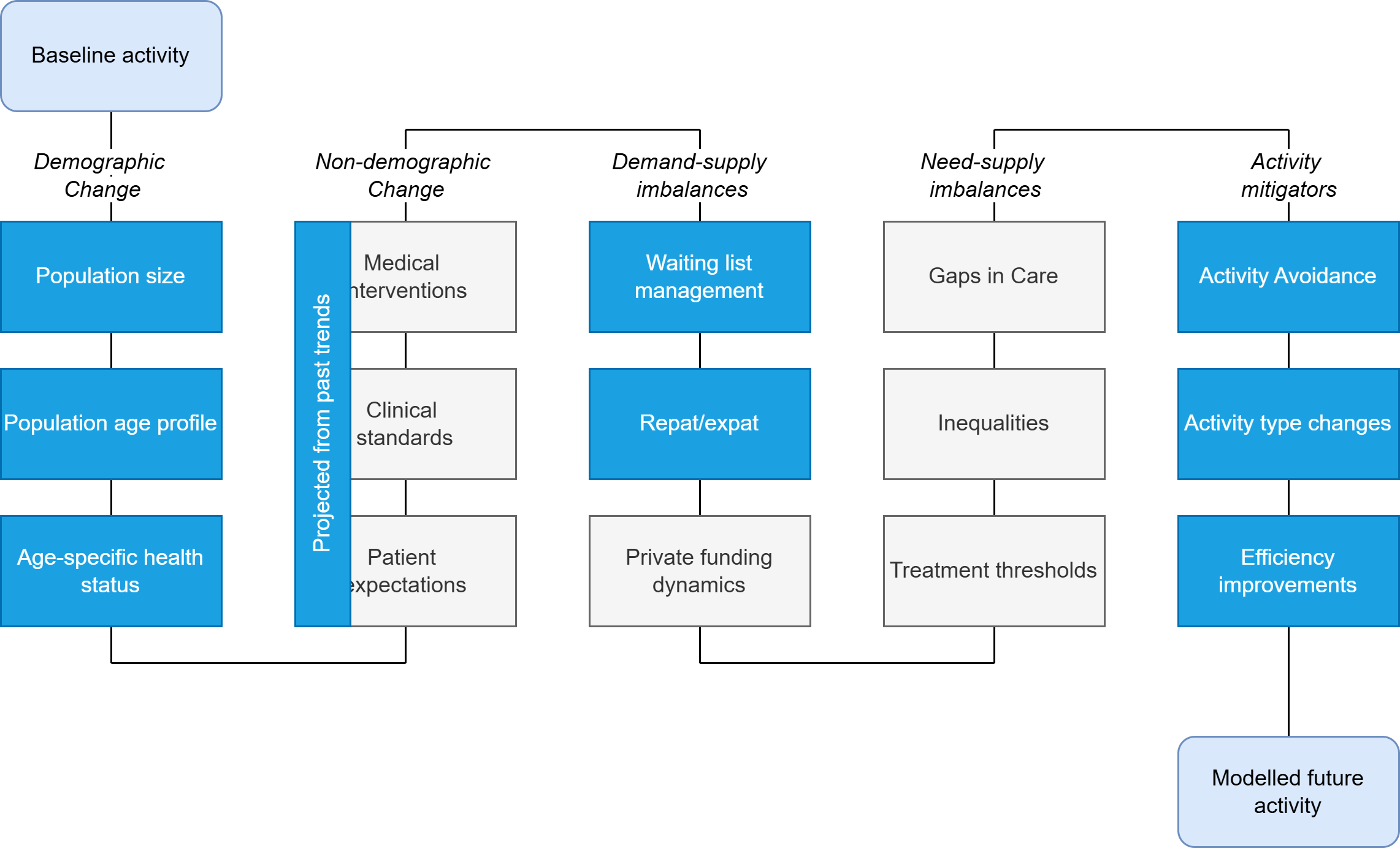
Diagram of model process
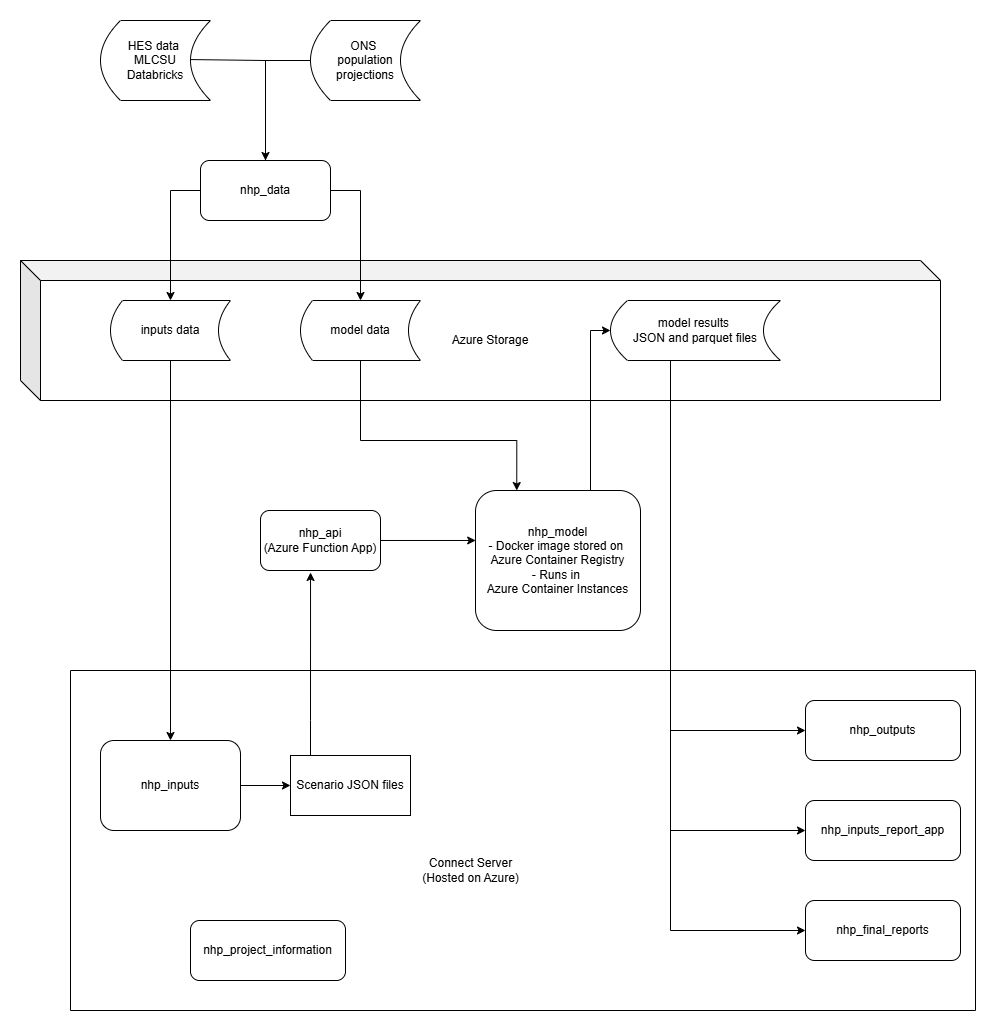
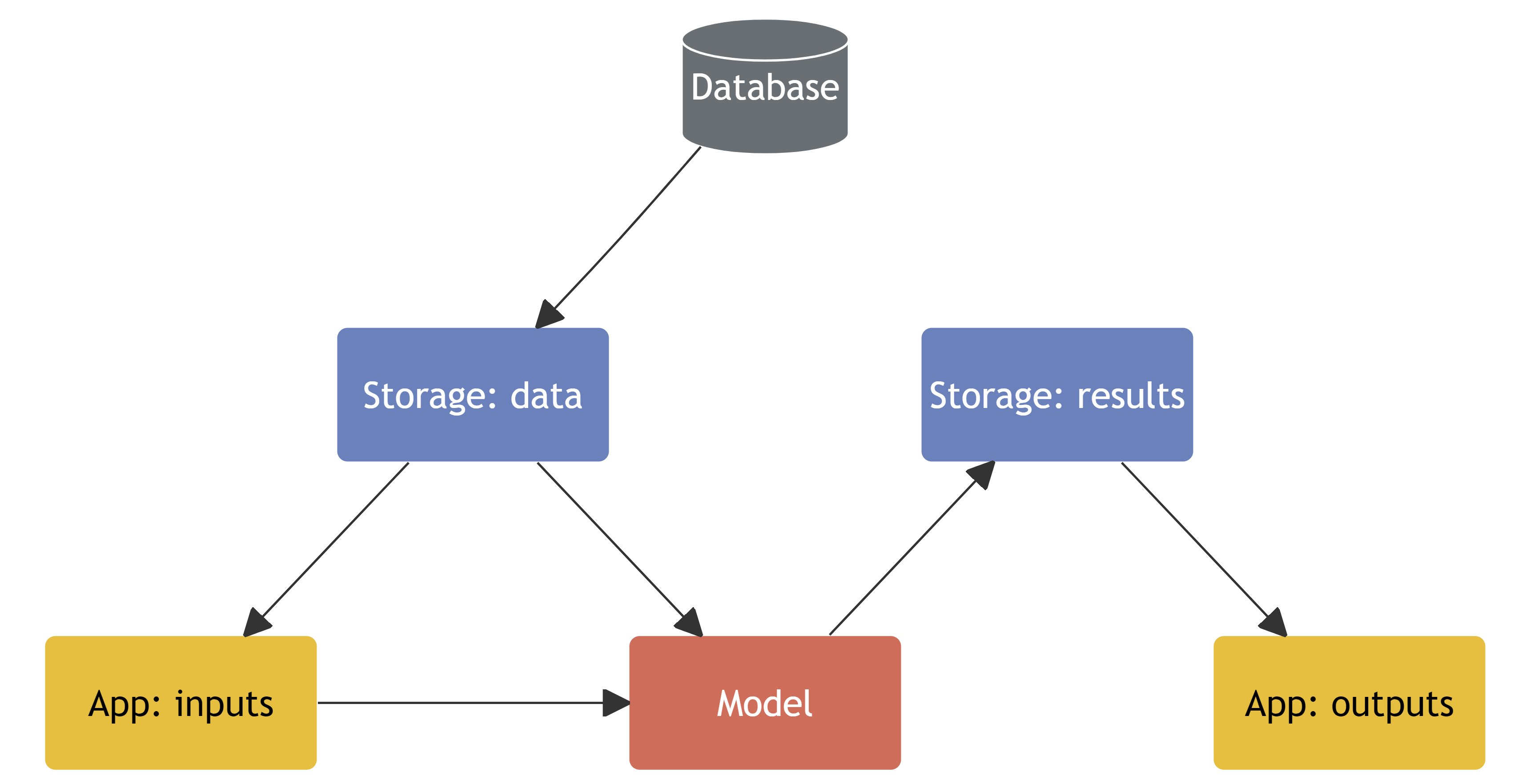
Principles
- Deploy alongside develop
- Reproducible analytical pipelines
- Transparent
- Open (FOSS where possible)
- Team skills and work management
Tools and platforms
- Data pipelines: , parquet, CSV
- Model: Python , Docker
- Apps: {shiny} and {golem} , Posit Connect
- Infrastructure and storage: Azure
- Documentation: Quarto
- Version control and collaboration: Git , GitHub
Data for NHP
- HES data stored on Azure
- Databricks and PySpark
- CSVs and TSVs for reference data
- parameters derived and stored in JSON

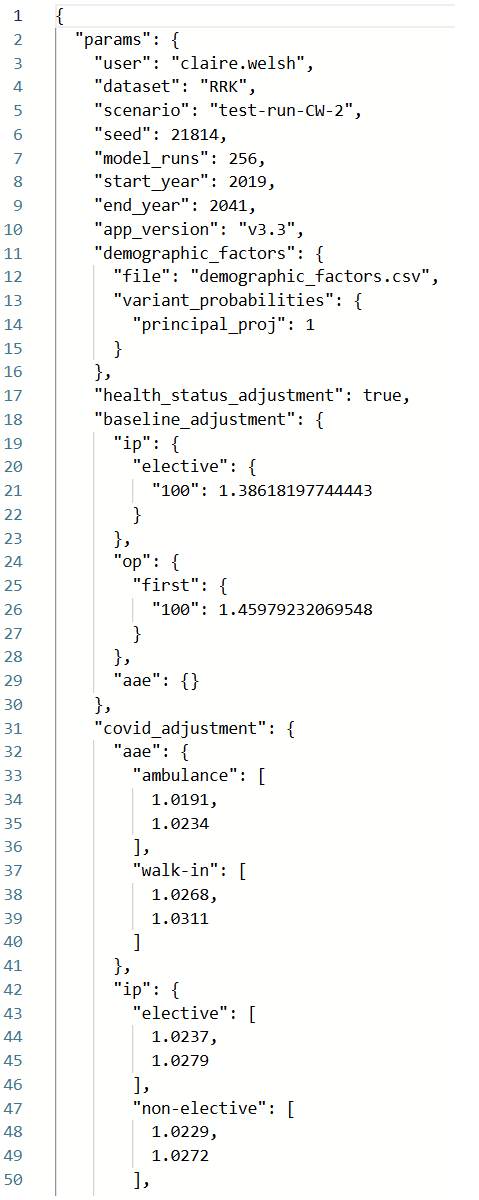
Model running
Parameters JSON passed to model via API
- Docker image stored on Azure Container Registry
- Runs in Azure Container Instance
- Built-in paralellisation features of Python language


Interfaces
Coded in R - Shiny Open repos: nhp_inputs and nhp_outputs
Modular design
- Each function is in its own .R
- Each module is separate
- UIs and servers are separate
- Packaged using {golem} to use R CMD check(), devtools::document() etc
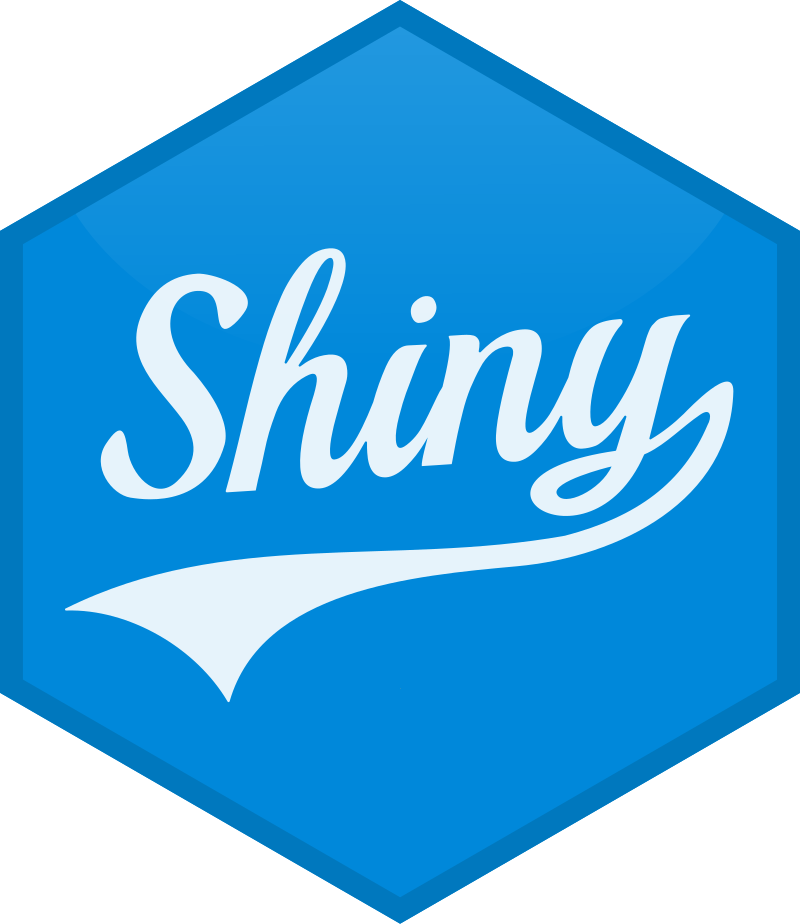
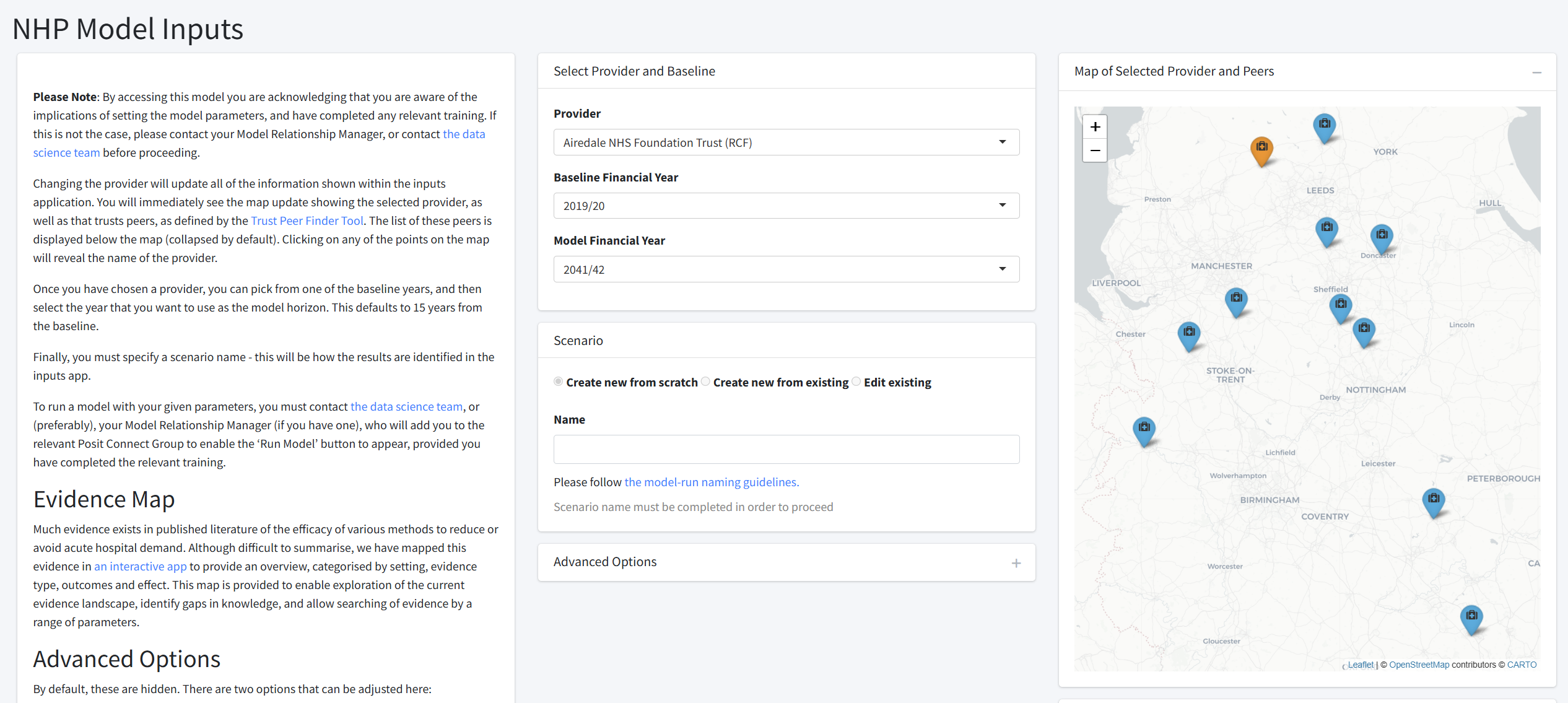
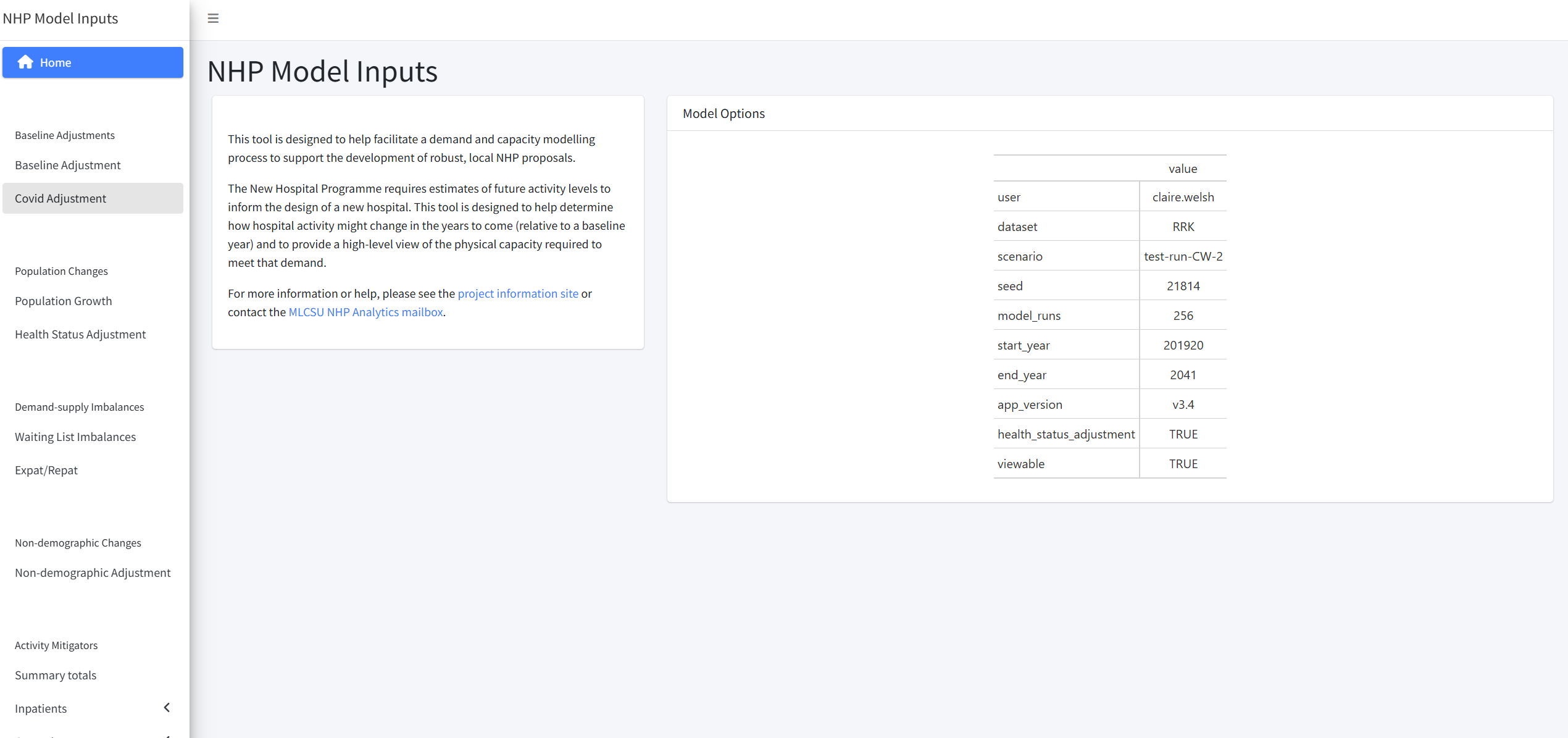
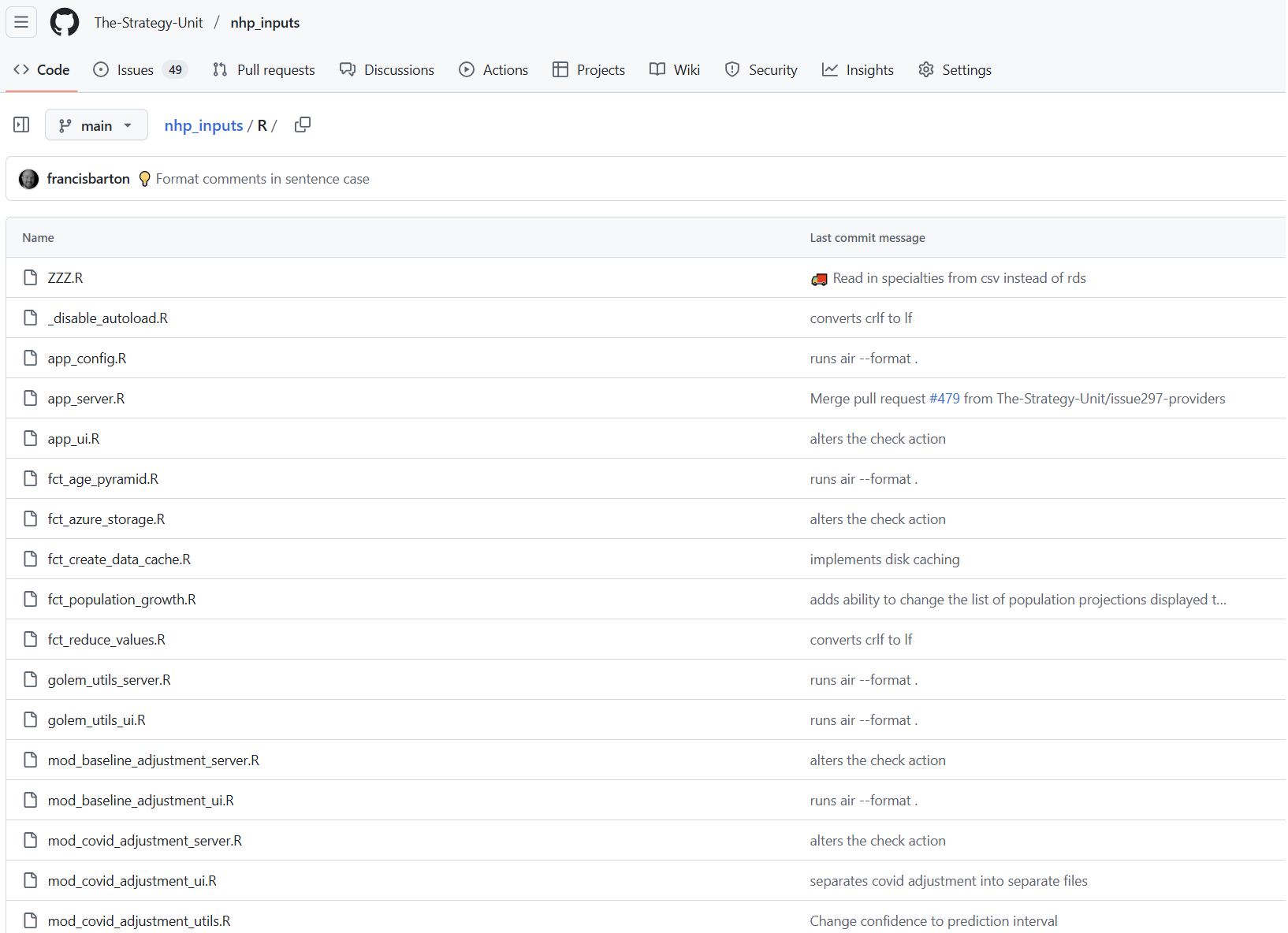
Outputs
Many formats:
We use a _brand.yml to help easily maintain style format of outputs (Quarto and Shiny).
Reproducible Analytical Pipeline (RAP) principles
Data versioning
Data and model follow the same semantic versioning1.
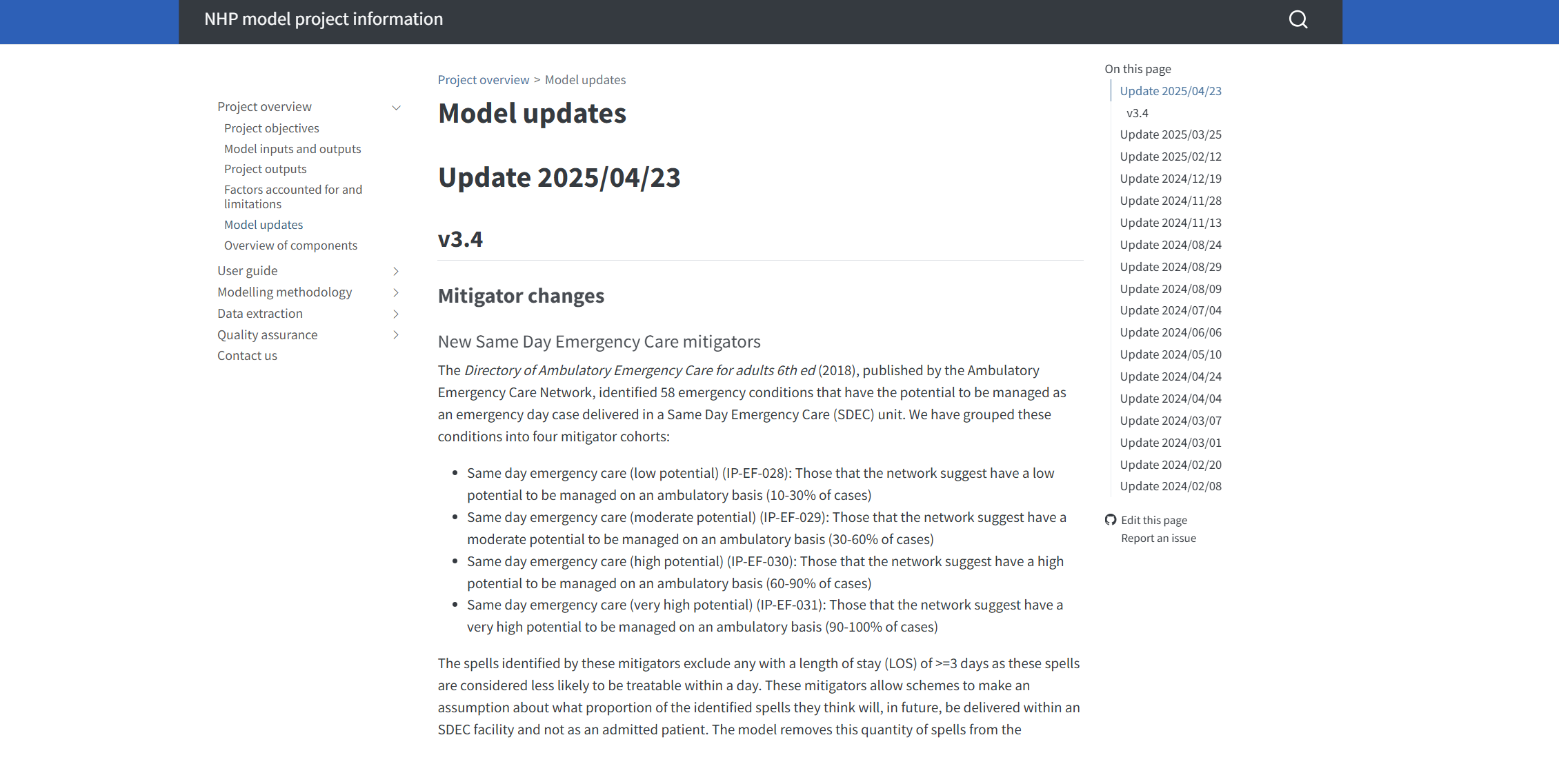
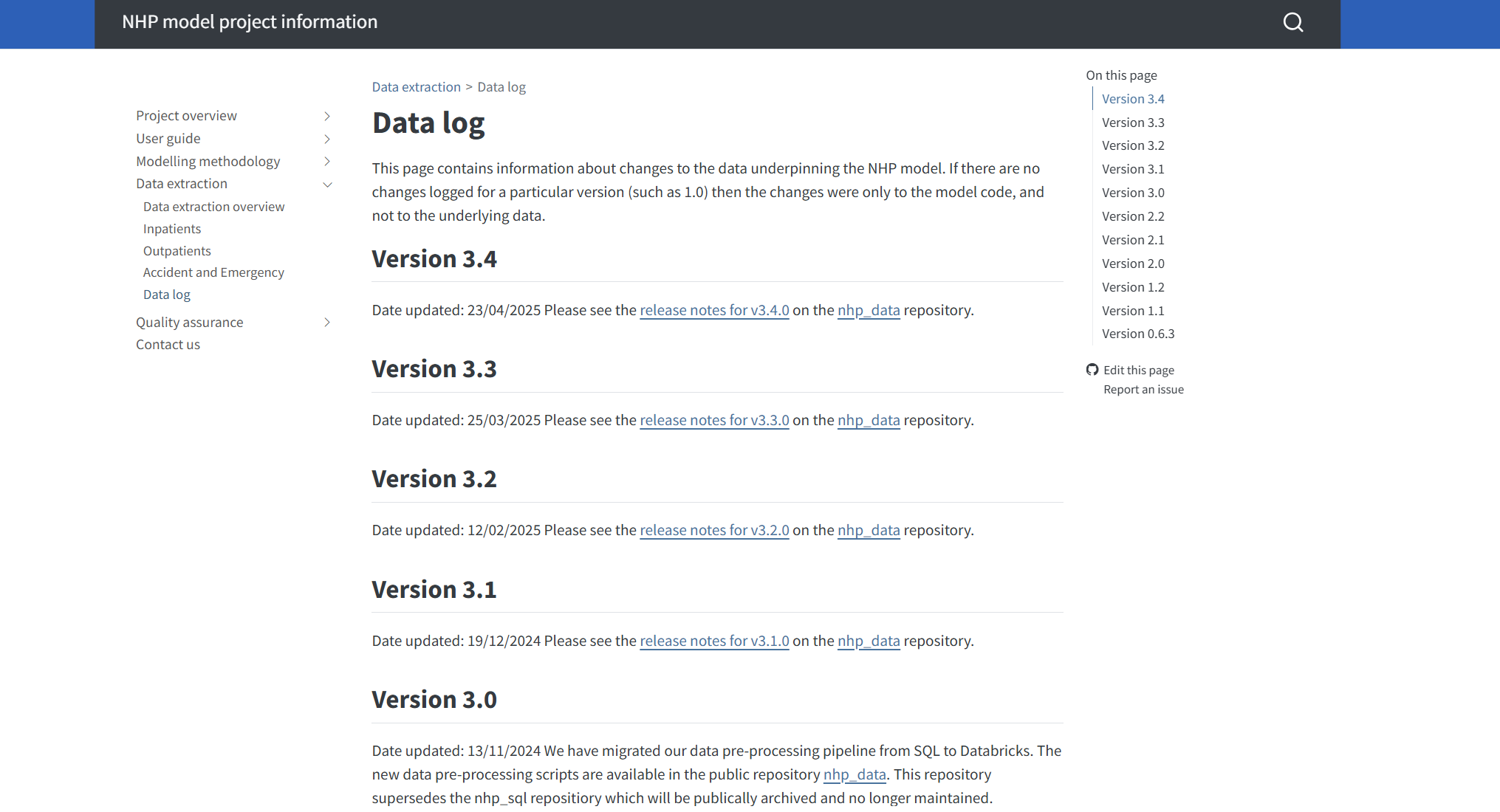

RAP
RAP continued
- Documentation
- Project Information
- READMEs on GitHub
- Docstrings, packaged apps (golem)
- JSON schema {✔❌} for validating the parameters passed to the model
Deployment (CI/CD)
How do we maintain clean, safe, working code, centrally, when we have open repositories and up to 10 people collaborating on maintaining that code alongside its active deployment?
Continuous Integration
Automated checks, tests when merging code into main
- On pull request submission
- On merge to main
Continuous Deployment
Automated checks and tests when deploying (to dev or to prod)
- On merge to main
- On release
GitHub Actions
Actions like:
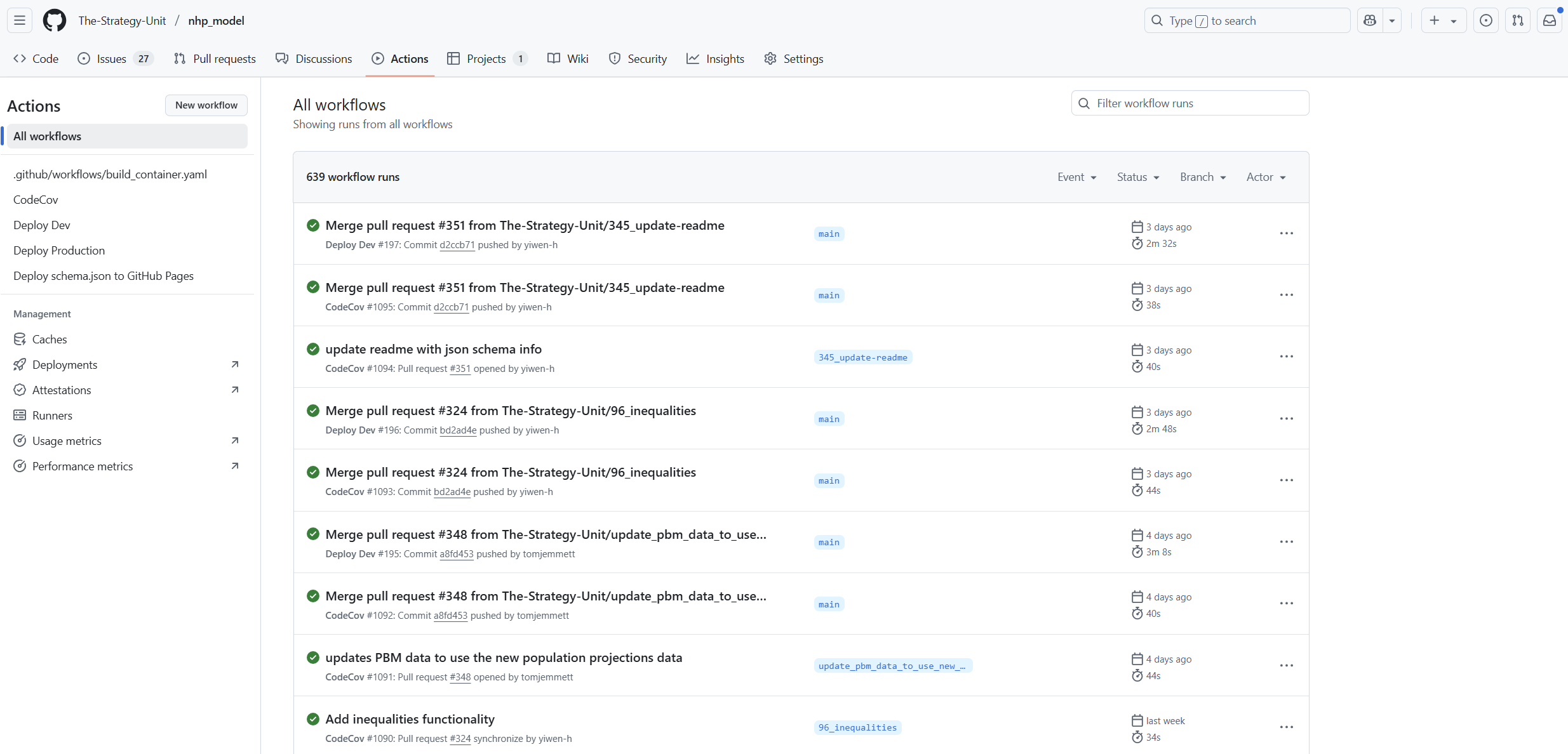
How we work
We are AGILE, and use Scrum (light)
- 3 week sprints with 1 week fallow
- Weekly sprint catch-up meetings
- Kickoff and retro
- Promote T-shape expertise while reducing ‘bus-factor’
- Transparent prioritisation processes
- Distinct team roles
- Scrum master : keeping the sprint on track
- Product owner : steer work towards the goals
- Project director : overall responsibility for delivery
- Development board : define the goals and priorities
- QA : oversee quality
Tip
Roles have enough specificity to provide clarity, but are also shared. Flat management structure.
Agile and Scrum in GitHub
Leverage a LOT of GitHub’s excellent tooling
- Projects
- Issues with bespoke labelling
- Branch protection rules
- CODEOWNERS
- Clear and consistent collaboration guidance
- Checklists
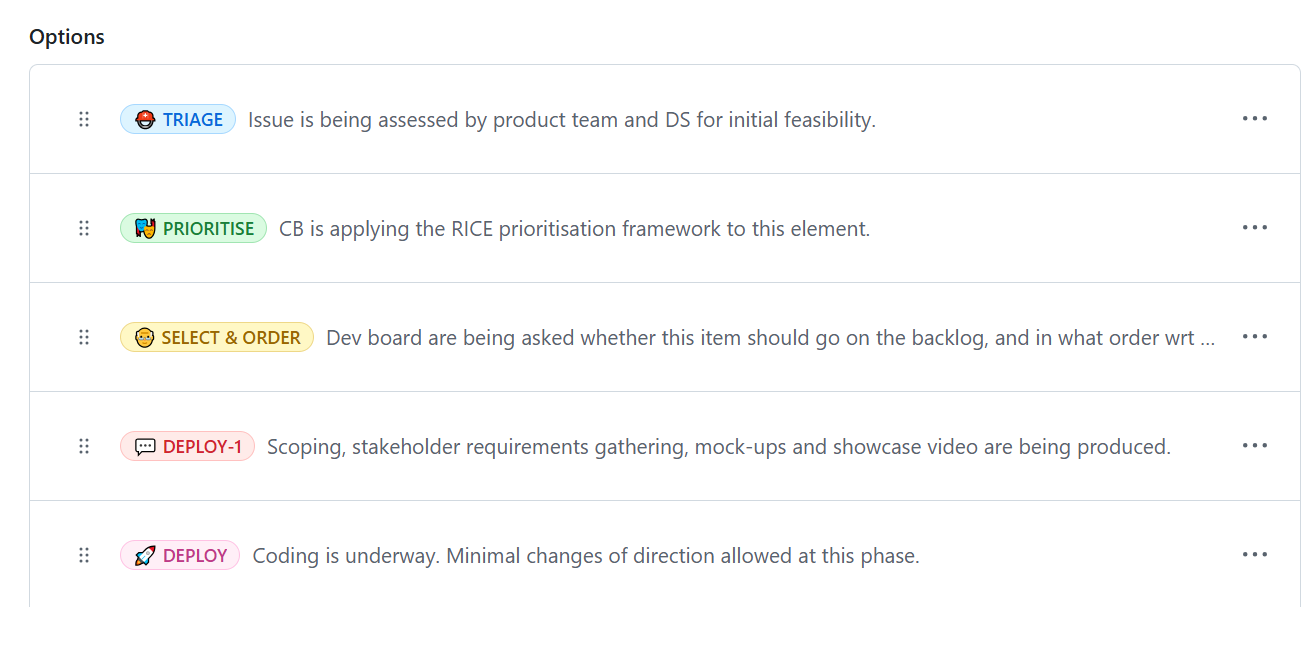
CODEOWNERS
A simple but powerful idea!

Product Team
‘The model’ is a product - it has current and potential use cases and user groups.
We need a team responsible for understanding the software business as well as the software product 🚀.
“What should we build next and why?”
NHS-R
- I learned R in 2009 in the bad old days
- I swore that I’d make sure that others didn’t suffer like I did
- NHS-R is the fulfilment of this promise, created in 2018
Core values of open source
- Transparency
- Collaboration
- Release early and often
- Inclusive meritocracy
- Community
- Work across organisational boundaries (obviously)
Core values
- Flat hierarchy
- Sharing
- Cooperate across organisational boundaries
- We cooperate across international boundaries
- We love beginners
- We make mistakes and learn together
What is NHS-R?
- Culture > Strategy
- Doing > Talking
- NHS-R is your permission to work your way
- Nobody ever asks us to do our best work
- NHSRplotthedots
- We know what to build, we know what to learn
- “Computer (department) says no”
Open source
- We believe in open source
- All NHS R solutions are open source
- We teach git and GitHub and encourage organisations to share their code
- We build stuff together because we believe in the value of the community
No such thing as a free lunch
- We believe in R, we believe in the NHS-R community, and we believe in each other
- NHS-R is not a LinkedIn certification
- It cannot be bought, sold, or exchanged
- You can’t buy a community
- But you can and must buy the glue that binds them together
Force multiplier
- Code is a force multiplier
- Wickham, 2014 https://bit.ly/3jQ5SuJ
- So is a community
- NHS-R is absurdly cheap and its ROI is absurdly high
- NHS-R is making people happy and productive
- NHS-R is changing the lives of its members and improving healthcare for everyone in the UK
What’s the connection between the NHP model and NHS-R?
- We’re not perfect but we’ve done the right thing
- Open code
- Open technologies
- Standard datasets
- Documentation
- Modularity
“Free as in piano”
- There are huge obstacles for other teams in using and contributing to the code
- Some are inherent- e.g. access to data
- But across the system people lack access to:
- Skills
- Software installs (just Python!)
- “Kit” - cloud compute, Posit Connect, etc.
How can NHS-R help?
- NHS-R showcases the benefits of RAP
- NHS-R demystifies the “risks” to IT departments who refuse to install R/ Python
- NHS-R gives people the training and the community to learn things together
- NHS-R loves beginners but NHS-R also shows off the best data science going on in the NHS
Learn more about The Strategy Unit